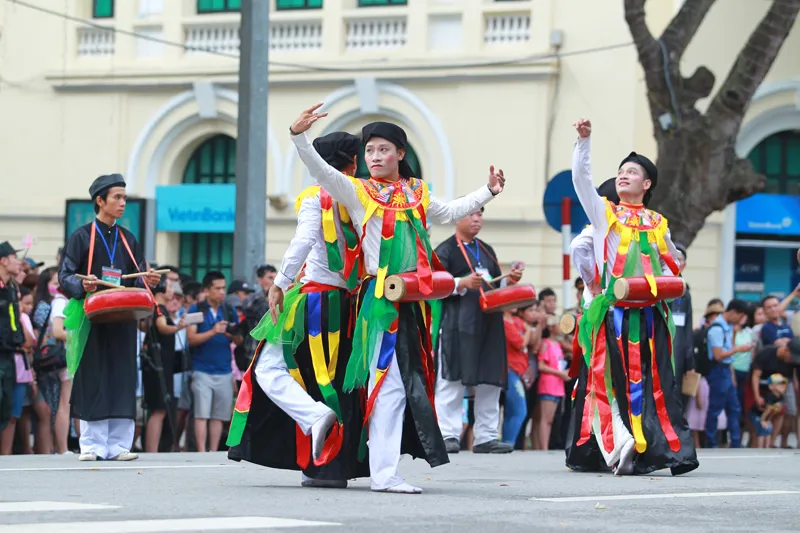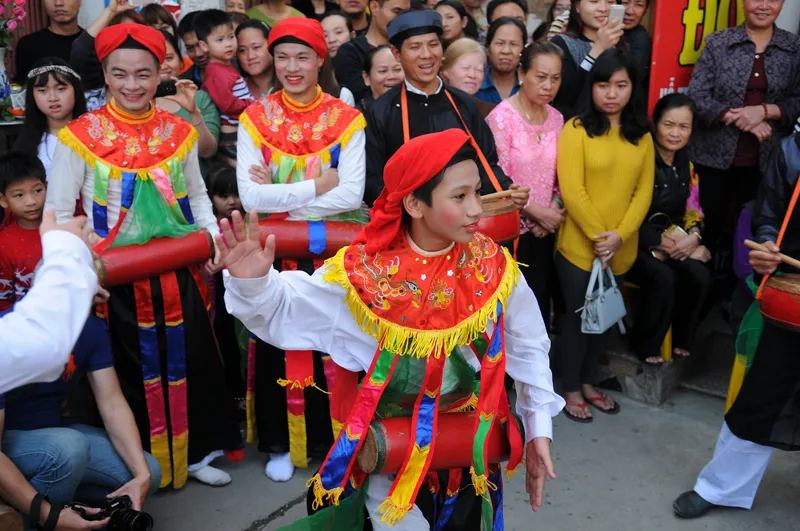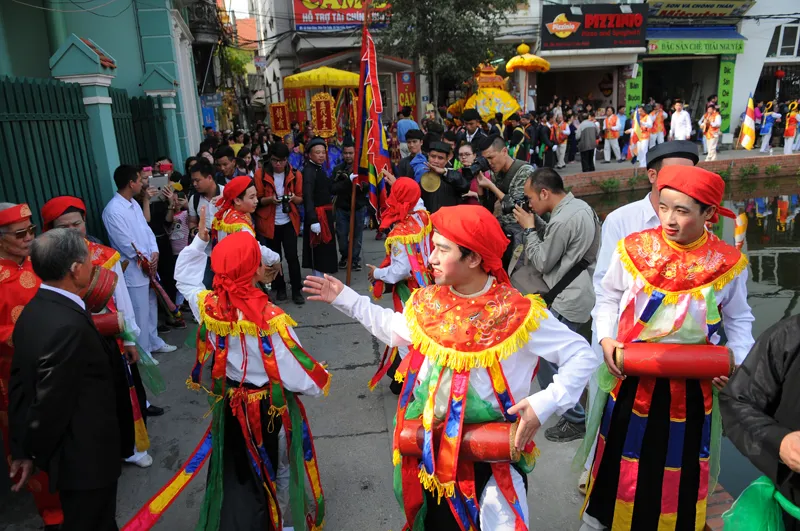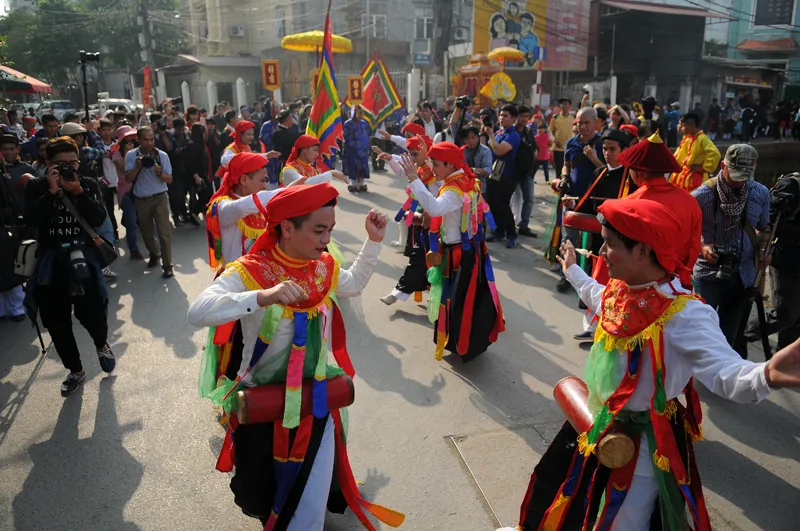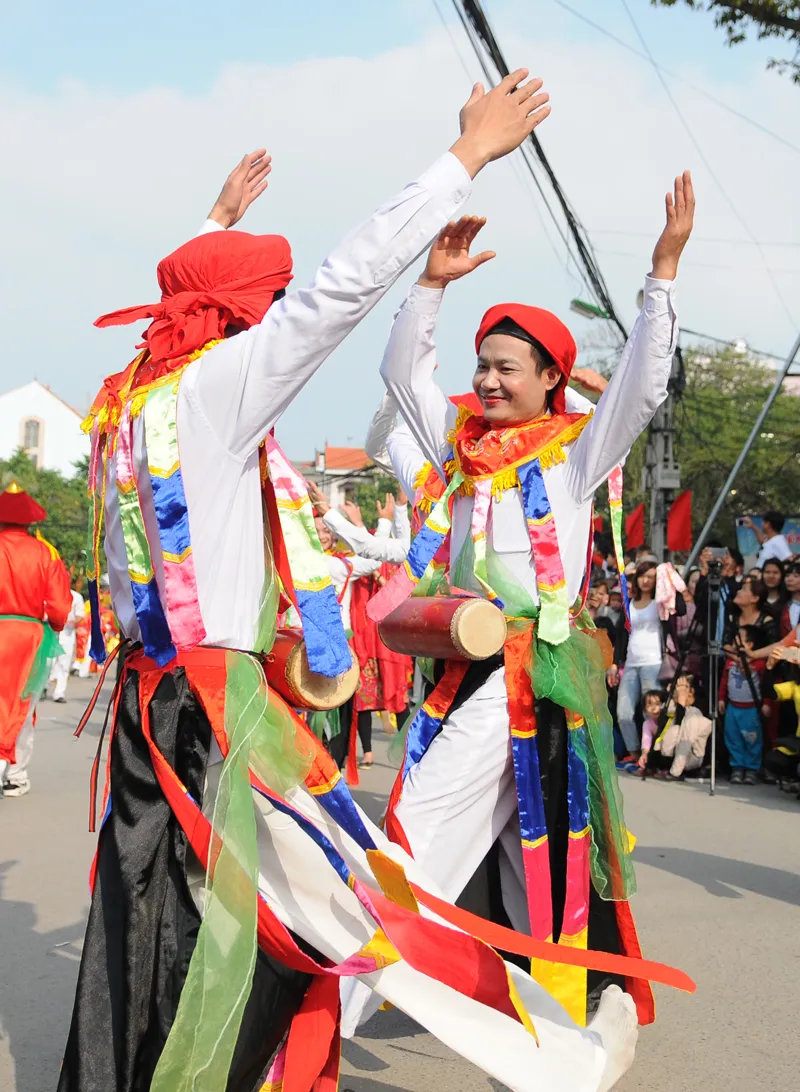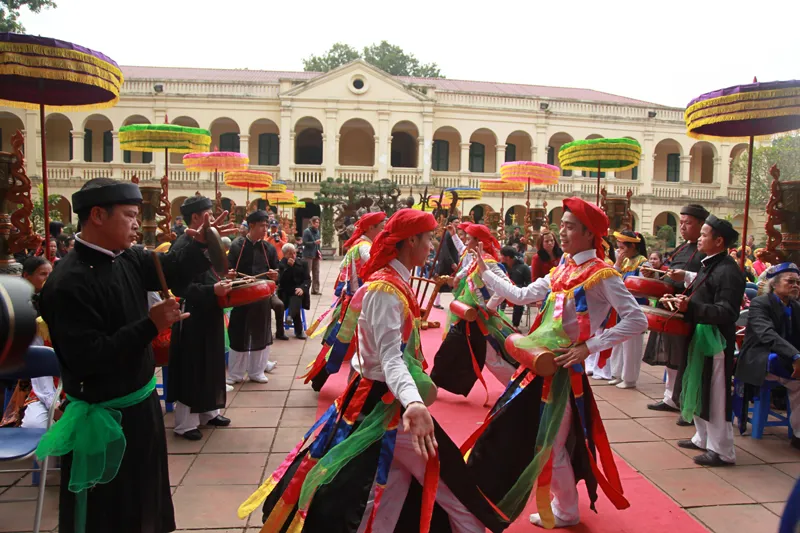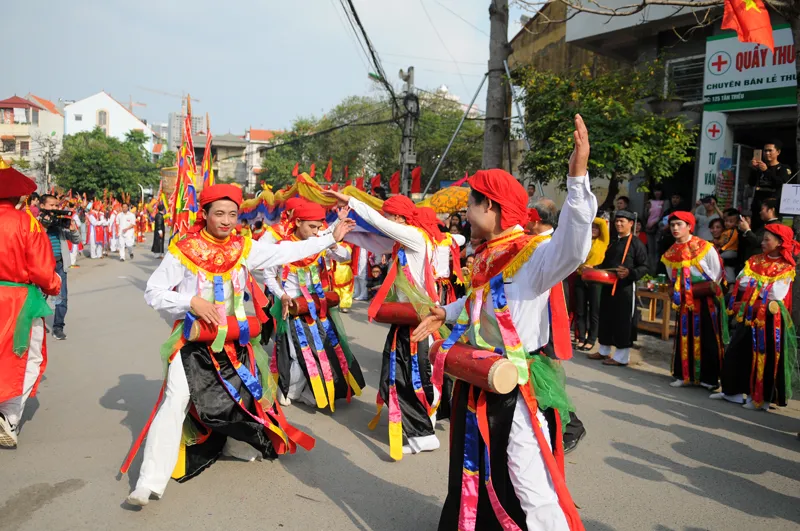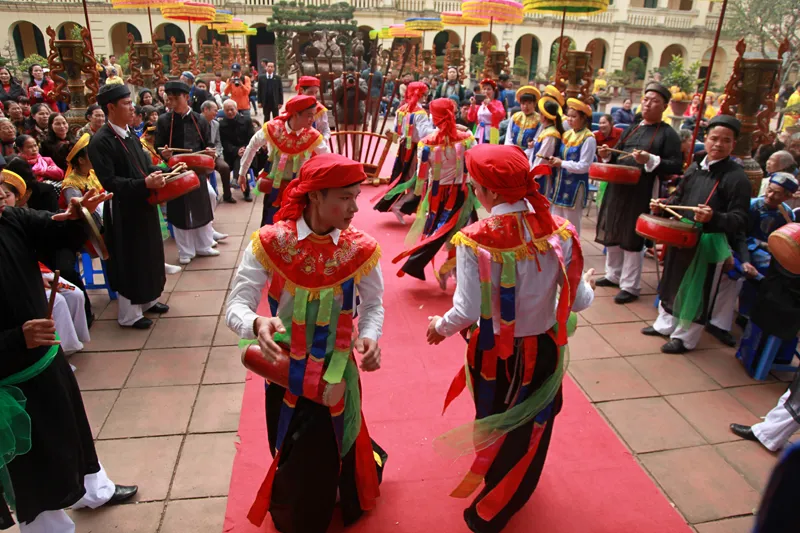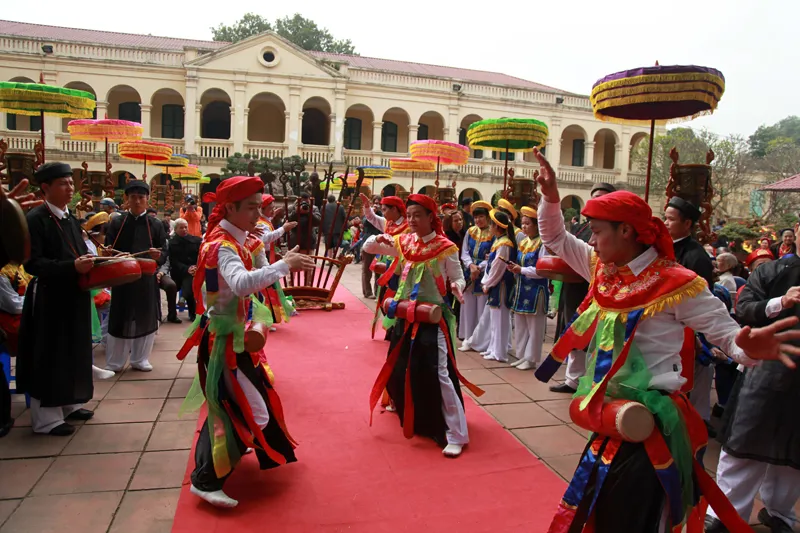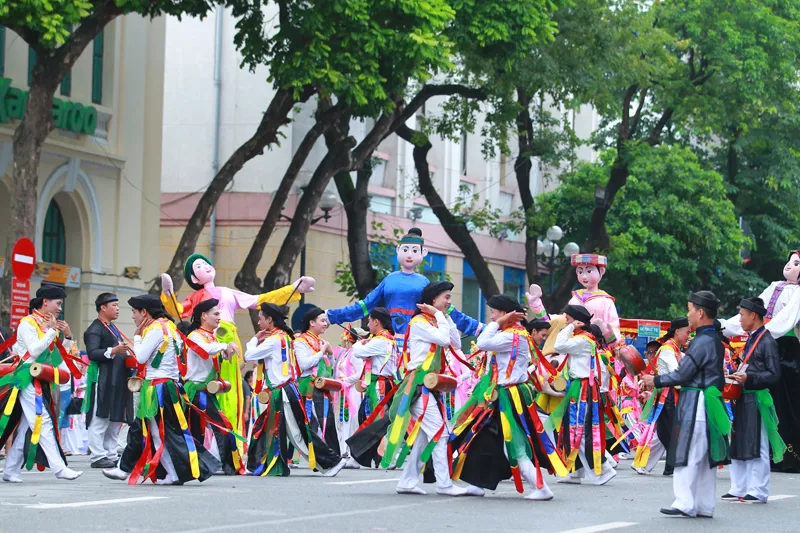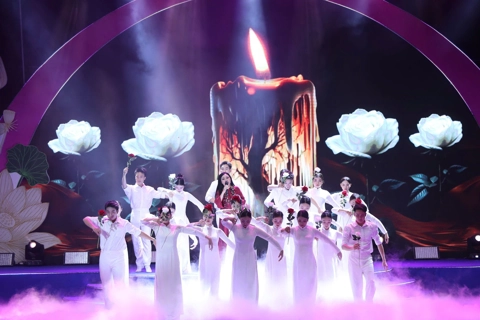Differing from most Vietnamese traditional and Western dances, where women own the stage, the Con di danh bong (flirtatious young girls' dance) is performed by men pretending to be women.
The dance is a local folk dance preserved in Trieu Khuc village, Thanh Xuan district of Hanoi.
It is beginning to fade from the memory of many people. Those who master the skills of the flirtatious young girls' dance are often the few elders left in Trieu Khuc village.
|
| A pair dances back to back, while corps dancers dance around them. |
|
| They accompany the lively dance with the beat of a cylindrical drum, called “Bong”, which is hang by a strap around their waist. |
|
| This drum is where the dance’s name, flirtatious young girl’s dance ("Con di danh bong"), originates. |
|
| The dance has 36 different variations. |
|
| The two principal dancers who pretend to be women had to be young men from the village’s learned families. |
|
| There are other players who beats gongs and cymbals to cheer the dance festival. |
|
| The dancers’ costumes are so colorful. |
|
| One reason women were never allowed to perform the dance was for its secret to be confined in Trieu Khuc village. |
|
| "The flirtatious girls’ dance of Trieu Khuc is much different from that of other localities. Dancers must be young men from the village, and village girls were banned from this dance, because the village elders fear that when girls got married, they would bring the dance along with them out of the village to their husband’s family in other regions, so the dance would no longer be only ours," an 85-year-old villager said. |
|
| Though the dancers are incredibly skilled, they are only allowed to perform within the village. "We consider the dance our village’s precious treasure, so we must protect it at all costs," the 85-year-old villager added. |

